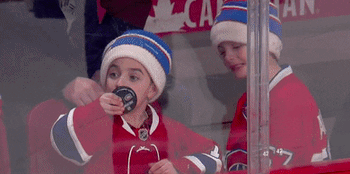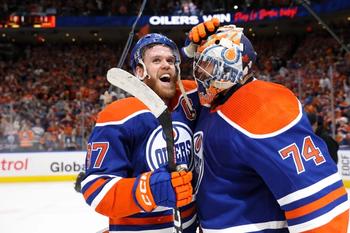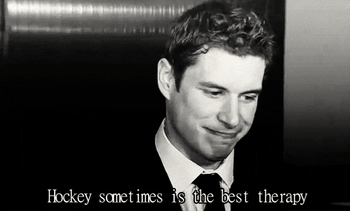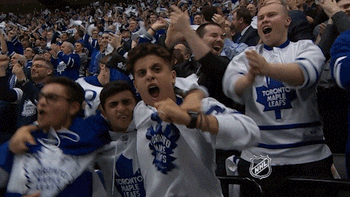Guide to Fantasy Hockey
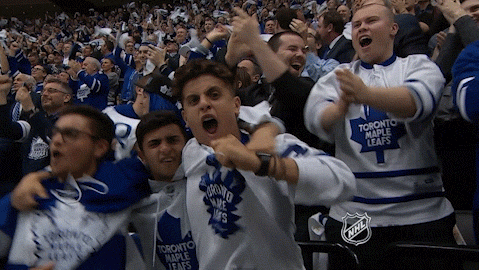
Just Google the word “fantasy” and it’ll land you right in the thick of podcasts, YouTube videos, articles and draft predictions for the four major sports leagues (that’s the NHL, MLB, NBA and NFL). This fantasy stuff is a BFD! In fact, we also have a guide to fantasy football and a guide to fantasy basketball you can check out. But back to hockey…
WTF is fantasy hockey?
Fantasy hockey is one part real, one part fake and 100% a whole lot of fun. Your mission, should you choose to accept it, is to pick a team of players that is better than any other team in your fantasy league. The players are real, the points they score are real, but the combination of players together is what makes it fantasy. You have the opportunity to create a dream team (or the dreamiest looking team, depending on your draft strategy *swoon*) made up of your favourite players and, ideally, the players you think will do the best this season.
Okay, I’m in. How do I play?
To play, you’ll need to join a league. A lot of workplaces will get groups together to do this. Or you can join a league for free online. We’d recommend taking a look at these websites:
- Yahoo (this is the most common)
Then it’s time to do a little prep work (this is a lot more fun than homework or that powerpoint presentation your boss keeps hounding you for). You’ll want to make up a list of players that you have the most interest in and want to try and get on your team. Most often, teams are made up of nine forwards, six defensemen, one utility player (forward or defence, your choice), two goalies and five to seven bench spots (these are the extra guys you’ll need when someone gets hurt, goes on a cold streak or doesn’t play for a few days).
Each day, as an owner, you get to set your lineup and pick which players hit the ice and which players will ride the pine. Then sit back and relax as your fantasy site calculates scores for you live, so you can watch your guys play in real life and watch your fantasy team rocket to the top of the standings at the same time.
Got it. But how do I be good?
You could pick your team based on best hockey flow (oh hey there William Nylander) but maybe go with something a little more practical if you want to compete with the best fantasy owners in your league. ESPN and Dobber Hockey have some top player lists that can help you with this.
If your league is hosted on Yahoo (which it likely is), the site will also give you a list of players the experts think will have the best season. Don’t get overwhelmed by these sites. They’re showing you way more information than you’re probably ever going to need to know.
This sounds fun. What else do I need to know?
Here’s a list of things that will definitely come up so you’re ready for the big leagues.
Draft Day - This is undoubtedly the most important day of your fantasy year because this is the day that you get to build your team. The most common type of draft is a snake. Each team will have a predetermined draft number (if your league has ten teams, you’ll get to draft somewhere between first and 10th). In a snake format, the 10th team to draft also gets to pick the 11th player because the order switches directions. This means that, as awesome as it is to draft first, you’ll have to wait around until the 20th player to get to choose again.
Your goal is to draft the best player that’s still available. And don’t worry, Yahoo will give you suggested picks so you don’t have to frantically flip through your research if the guy you really wanted went one draft pick ahead of yours.
ADP (Average Draft Position) - Each fantasy site will show the average draft position of players. This is the average spot that that player was taken across all of the drafts run on that website. The higher the ADP, the more in demand that player is.
Trades - Just like the real NHL, your league will give you the option to trade. This can be great news if the #1 player you really wanted on your team went to someone else, though you’ll likely have to give up something big in return. Trades are a great way to shake things up and get access to players you might have thought were gone forever.
Waiver Wire - This is where you’ll be able to get players that weren’t chosen in the draft. Sometimes players get hurt or they underperform and you’re going to want to give them the snips. (Don’t worry, we won’t tell them *wink*) You can replace them with players from the waiver wire. As long as no one else owns a player, they are fair game for you to add to your squad.
Sleeper Pick - These guys are not actually asleep (hopefully). A sleeper pick is a player that has the possibility of being a big breakout star, kind of like an underdog. It’s not a guarantee, but if you get lucky he could be one of the best guys on your team. At one point, both Mark Scheifele and David Pastrnak were sleeper picks — now they are two of the best guys on their respective teams.
Head-to-Head - This is the most common type of fantasy league. Say your league has 12 teams, each week you’ll face off against another team. Your goal is to be better than the team you’re up against in a number of categories; goals, assists, shots on goal, blocks, hits, etc — the categories will depend on your league. At the end of the week, you’ll get one point per category that you won.
Rotisserie League - Wipe the drool off your face, this has nothing to do with chicken (unfortunately). This type of league might be a little easier to understand than head-to-head. Think of rotisserie like “total points.” Every category is tallied from the beginning of the season to the very last game. To win, you must have the most points at the end of the year.
Each league will have categories that are a little bit different (some might include penalty minutes, others might not), so tweet us questions (@thegistnewsca or @thegistusa) if you want help with your specific league!
Some draft tips to get you started:
- Get acquainted with the top ten guys in the league. It’s always going to be debatable, but your first-round pick is probably the most important.
- There is no right or wrong way to draft, but try to get a core group of players early (three forwards, two defense and a goalie) and then start to fill in the gaps where you think you might be lacking talent.
- Don’t waste a high draft pick on a goalie – sometimes they pay off, but more often than not they aren’t worth reaching for. Goalies are notoriously unpredictable, and even the best in the league (like Carey Price) can have bad seasons. You’re better off taking a more reliable player with that draft pick.
- OUR HOTTEST TIP: Still stressed after reading all of this? You can stage a mock draft online on Yahoo here. This comes with no pressure and just gets you acquainted with how the drafting process works. We cannot recommend this enough if you’ve never joined a fantasy league or drafted before. Practice makes perfect and all that stuff, ya feel?
Fun fact to share on draft day:
Fantasy hockey might not be the biggest fantasy format, but it was the first! Fantasy hockey launched on the web in early 1995 and it paved the way for all other fantasy formats.
Still have questions? That’s what we’re here for! Slide into our DMs, tweet us @thegistnewsca/@thegistusa or hit us up with an email — we want to help you be the best fantasy hockey owner you can be.
Written By: Alexis Allison
GIST Guest Writer and Hockey Guru
Don't get The GIST’s twice-weekly newsletter yet? Let's make it email official.
Enjoying this article? Want more?

Sign up for The GIST and receive the latest sports news straight to your inbox three times a week.
